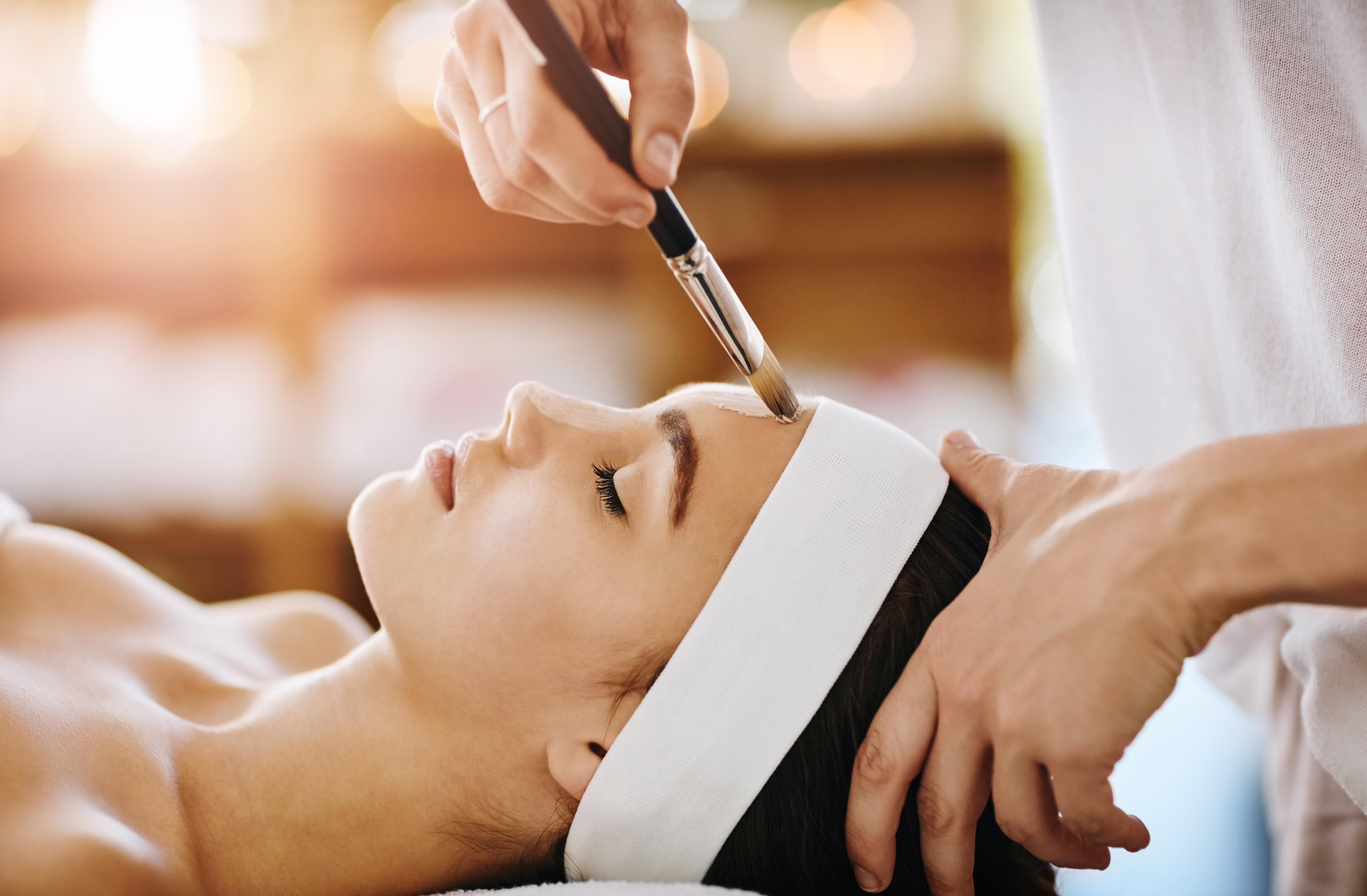What are Chemical Peels?
Chemical peels are acid-based solutions that are intended to create partial-thickness damage on the skin's surface in order to remove the top layers. This promotes epidermal growth, with collagen stimulation in the underlying dermis during the healing process. As a result, your skin will look healthier and younger after the treatments. Chemical peels are used to treat wrinkles, hyperpigmentation, acne, and scars.
The peels can be divided into very superficial, superficial, medium, and deep. A skincare professional can help you to choose the right peels based on skin types and skin depths of exfoliation.
Superficial Peels
Superficial Peels are the lightest peels with little to no downtime and can be used anytime during the day, known as “lunchtime peel”. These peels are mostly made from AHAs (alpha-hydroxy acids) and BHAs (beta hydroxy acids) and only penetrate the epidermis, remove dead skin cells and encourage collagen production. You can expect an instant brightening and smooth skin.
Medium and Deep Peels
Medium and Deep Peels, such as TCA (trichloracetic acid) works successfully on fine lines, wrinkles, sun damage, acne, and scars based on various strengths. TCA in higher percentage has the ability to penetrate the upper reticular dermis to lift pigmented keratinocytes and lightening hyperpigmentation. However, higher percentage of TCA peels should be used with caution in dark skin patients as they have been known to cause post-inflammatory pigmentation and uneven skin tones. To give the same results and reduce the risks of complications, Medium Peels are usually prepared at lower concentrations of TCA blended with other active agents including glycolic acid, salicylic acid and/or lactic acid. These peels are ideal for stimulating collagen production and improving skin texture.
What to Expect During Chemical Peels
If you are receiving medium to deep chemical peels, the first step is a consultation with your clinician or dermatologist to see if you are the right candidate. To perform chemical peels, the clinician would first cleanse and degreases your skin. Then they apply chemical solutions with cotton pads in several passes. You will feel a mild tingling sensation or stinging while the acid is on your skin. Next, the clinician may give you a hand-held fan to cool down the skin, then sunscreen or an ointment, depending on the peel to protect the skin.
Recovery Progress
Your recovery time depends on the peel’s strength. Superficial/Light Peels result in redness, dry, and flaking skin for 1-3 days afterward. Medium Peels takes 1-2 weeks to heal based on the strength of TCA used, how much is applied and how long it is left on your skin. You may experience some redness, swelling, and skin shedding for several days. Day 4 and 5 are typically the heaviest peeling. Medium Peels are applied on Wednesday will normally result in the heaviest peeling Saturday and Sunday. Skin shedding is normal and clients should not pick or peel off peeling skin. If shredded skin becomes too long, they can take some eyebrow scissors to clip the excess skin off. Rolling the skin off in the shower, rubbing, and over-washing is the same as picking the skin off prematurely and can result in hyper/hypopigmentation.
Results
Smooth and bright skin is the expected result of the Chemical Peels. You often notice an immediate improvement in the texture and tone of the skin once the healing process is complete. Chemical Peels can be done every 6 weeks to keep the best results.
Back to Blog
All Rights Reserved. Web Design & Internet Marketing by Studio III

